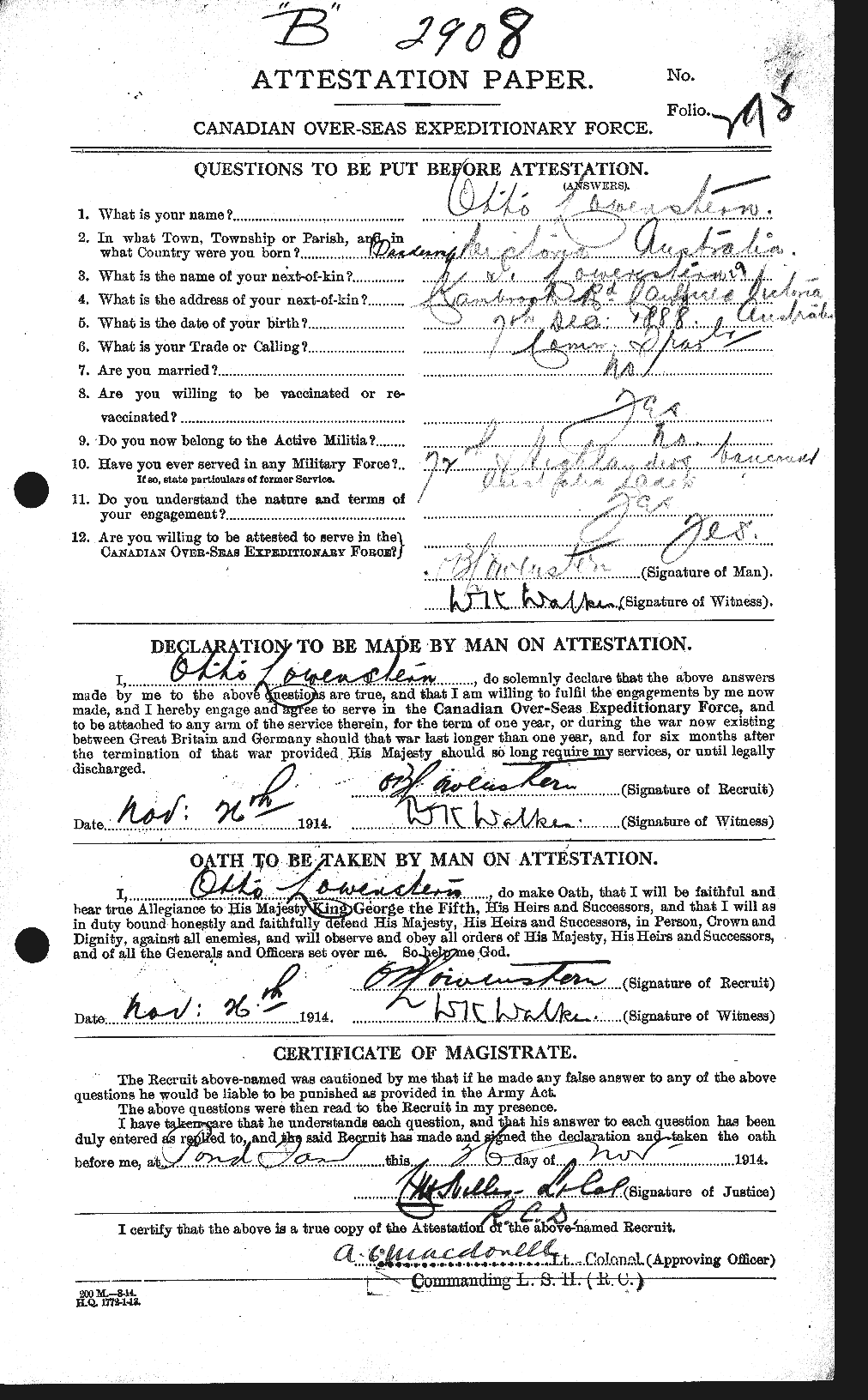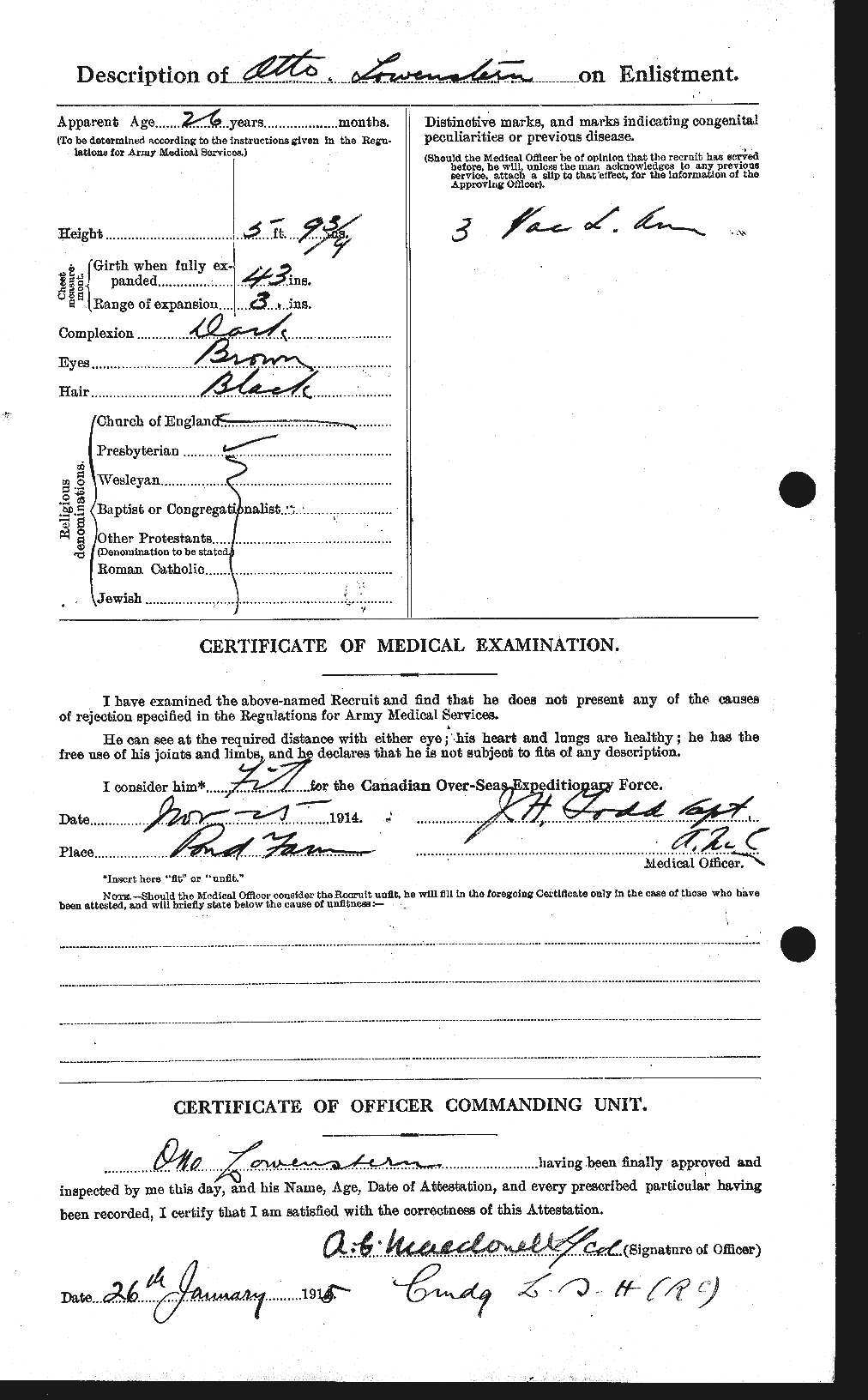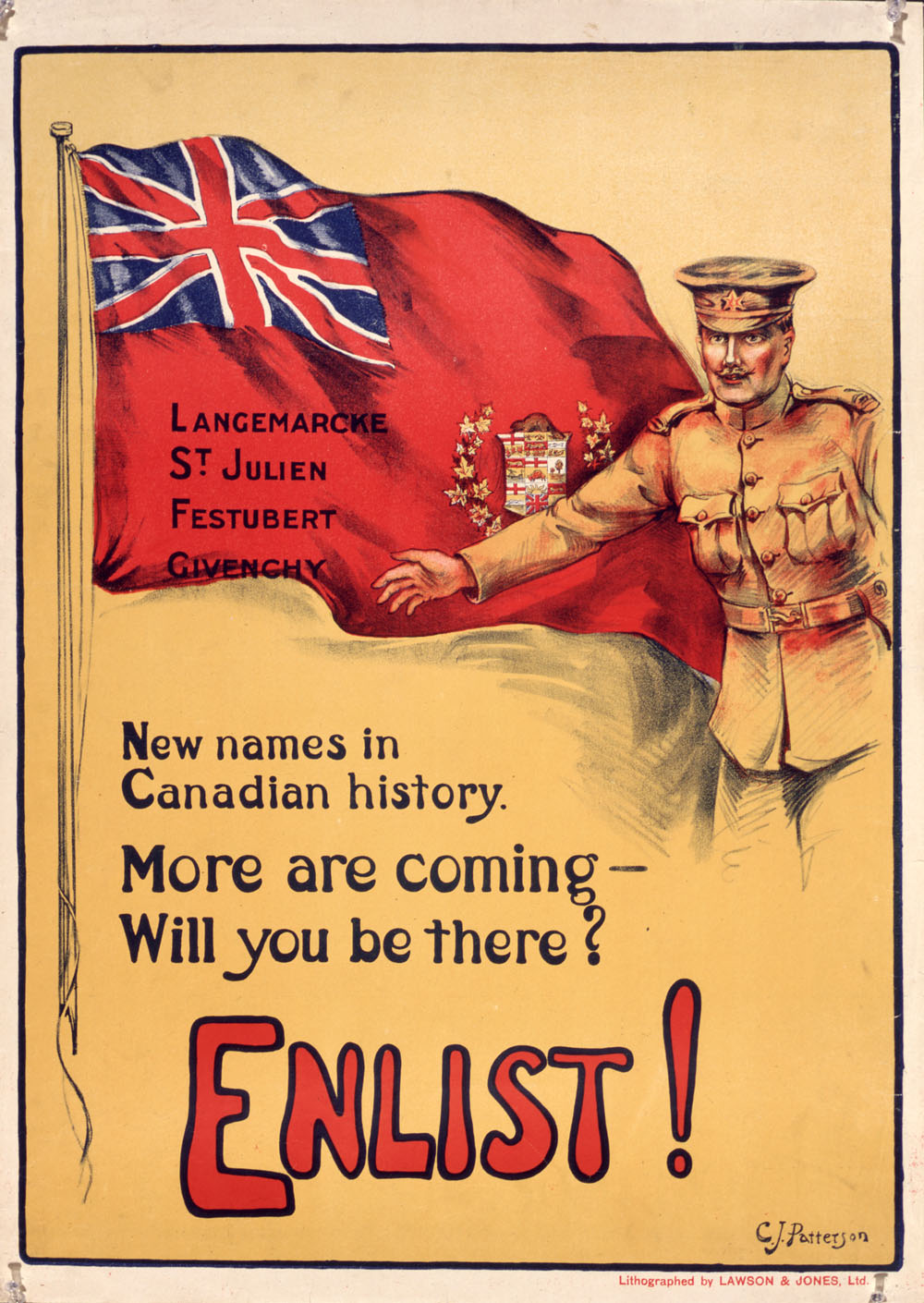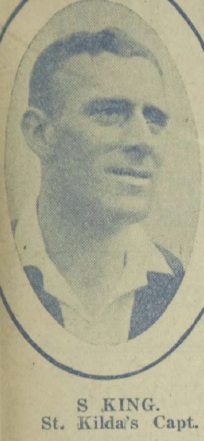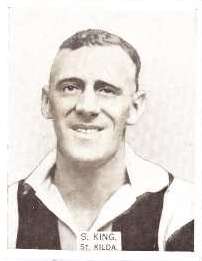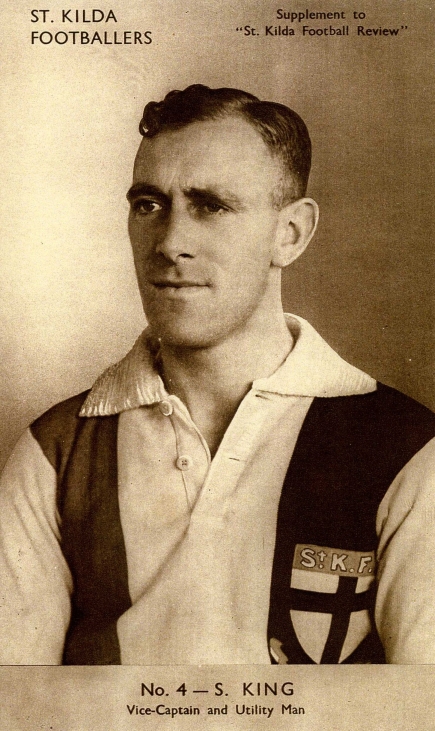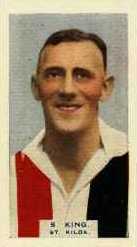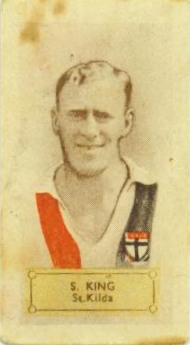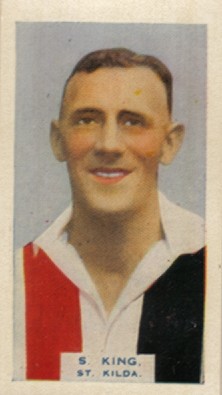Sunshine Saint
Cancelled
- Dec 1, 2011
- 4,464
- 6,211
- AFL Club
- St Kilda
- Other Teams
- Mitta United, Tapalinga, St Marys
- Thread starter
- #26
http://www.awm.gov.au/people/rolls/R1765541/
http://australianfootball.com/players/player/Bert+O%27Connell/2438
Albert (Bert) O'Connell
Private 24th Battalion, First A.I.F
277th Player to Represent St Kilda
2 Games / 0 Goals - 1908
Age at Death: 32
Bert O'Connell was born at Inglewood Victoria. O'Connell's story is one of bravery, adversity, persistence and tragedy. O'Connell played two games for St Kilda in 1908. From there up to his enlistment on April 10, 1915 in the First A.I.F, O'Connell's occupation is listed as a labourer. O'Connell sailed from Melbourne on June 25, 1915 on the HMAT Ceramic A40.
O'Connell was posted to the war front at Gallipoli. Whilst there he has hospitalised in a field hospital at Anzac (Gallipoli) with dysentery and then pyrexia (fever). At that time Bert's mother received a written note from a nurse in the field hospital at Anzac informing her that her other son was there with pneumonia and that Bert had also been there and was fairing poorly and had been sent back to the front at Gallipoli still suffering with dysentery.
After the evacuation from Gallipoli, O'Connell was sent to the front in France and Belgium. It was here on the Western Front that he was wounded for the first time, with his medical record listing him as temporarily unfit for service, due to have taken on shrapnel. O'Connell throughout his military career was wounded a further three occasions, with the fourth in which he suffered extensive gun shots wounds to the shoulder and down his complete side, eventually proving fatal. It appears from a letter from Bert's mother, that Bert and his brother were in the trench together at the Western Front in France, when they became separated and lost touch with each other. Bert was shot shortly after this and his brother had heard that he had been wounded and sent to England.
The hardship of the conditions showed in his time on the Western Front when he was hospitalised several times with bronchitis and once for conjunctivitis. It should be noted that O'Connell immediately rejoined his battalion after each illness, or from wounds suffered in action.
It is worth noting the incredible sacrifices that so many families made in Australia towards all wars,but especially World War 1. Bert O'Connell's family was a reflection of this. Bert's mother Mrs Mary Smith from Wedderburn wrote to military authorities at different times inquiring as to the whereabouts and condition of different family members. These being her sons Bert and his brother J. O'Connell, her husband J.R Smith (one of the legendary Western Front tunnellers) and her son in law P.W Hocking. On one occasion after writing inquiring as to all four, she is informed that her son J.O'Connell is wounded in hospital, but that they have no news on the others, so it is to be assumed they are with their units and ok.
Below is the text of the letter to Mrs Smith (letter in documents below) informing her of Bert's death:
"Dear Madam,
With reference to the report of the regrettable loss of your son, the late No 1546, Private A O'Connell, 24th Battalion, I am now in receipt of advice which shows that he was wounded (4th occasion) on 1st September 1918 and admitted to the 12th General Hospital, Rouen, France, the following day. He was transferred to England and admitted to the 3rd Western General Hospital, Cardiff, Wales, on 6/9/18, where he died on 1st November 1918 as a result of his wounds (gun-shot wound right shoulder, right leg, right side and foot). He was buried in Cardiff New Cemetery, Cardiff, Wales, Grave No. 56, Section RH. Consecrated ground, the Rev. Father G. Elson officiating.
The deceased soldier was accorded a full military funeral, firing party, bugler and pall bearers being in attendance. The coffin (good polished elm) was draped with the Union Jack and conveyed to the grave side on a gun carriage, surrounded by several beautiful wreaths sent from Australian Red Cross and Nursing Staff. The "Last Post" was sounded at the grave side. Mrs Hedger Wallace, Australian Red Cross, 4 Rast Grove, Cardiff, was present at the funeral. Administrative Headquarters A.I.F London were represented at the funeral. The grave will be buried and an oak cross erected by the A.I.F London.
The utmost care and attention is being devoted where possible to the graves of our soldiers. It is understood that photographs are being taken as soon as possible and these will be transmitted to next-of-kin when available."
Lest We Forget











http://australianfootball.com/players/player/Bert+O%27Connell/2438
Albert (Bert) O'Connell
Private 24th Battalion, First A.I.F
277th Player to Represent St Kilda
2 Games / 0 Goals - 1908
Age at Death: 32
Bert O'Connell was born at Inglewood Victoria. O'Connell's story is one of bravery, adversity, persistence and tragedy. O'Connell played two games for St Kilda in 1908. From there up to his enlistment on April 10, 1915 in the First A.I.F, O'Connell's occupation is listed as a labourer. O'Connell sailed from Melbourne on June 25, 1915 on the HMAT Ceramic A40.
O'Connell was posted to the war front at Gallipoli. Whilst there he has hospitalised in a field hospital at Anzac (Gallipoli) with dysentery and then pyrexia (fever). At that time Bert's mother received a written note from a nurse in the field hospital at Anzac informing her that her other son was there with pneumonia and that Bert had also been there and was fairing poorly and had been sent back to the front at Gallipoli still suffering with dysentery.
After the evacuation from Gallipoli, O'Connell was sent to the front in France and Belgium. It was here on the Western Front that he was wounded for the first time, with his medical record listing him as temporarily unfit for service, due to have taken on shrapnel. O'Connell throughout his military career was wounded a further three occasions, with the fourth in which he suffered extensive gun shots wounds to the shoulder and down his complete side, eventually proving fatal. It appears from a letter from Bert's mother, that Bert and his brother were in the trench together at the Western Front in France, when they became separated and lost touch with each other. Bert was shot shortly after this and his brother had heard that he had been wounded and sent to England.
The hardship of the conditions showed in his time on the Western Front when he was hospitalised several times with bronchitis and once for conjunctivitis. It should be noted that O'Connell immediately rejoined his battalion after each illness, or from wounds suffered in action.
It is worth noting the incredible sacrifices that so many families made in Australia towards all wars,but especially World War 1. Bert O'Connell's family was a reflection of this. Bert's mother Mrs Mary Smith from Wedderburn wrote to military authorities at different times inquiring as to the whereabouts and condition of different family members. These being her sons Bert and his brother J. O'Connell, her husband J.R Smith (one of the legendary Western Front tunnellers) and her son in law P.W Hocking. On one occasion after writing inquiring as to all four, she is informed that her son J.O'Connell is wounded in hospital, but that they have no news on the others, so it is to be assumed they are with their units and ok.
Below is the text of the letter to Mrs Smith (letter in documents below) informing her of Bert's death:
"Dear Madam,
With reference to the report of the regrettable loss of your son, the late No 1546, Private A O'Connell, 24th Battalion, I am now in receipt of advice which shows that he was wounded (4th occasion) on 1st September 1918 and admitted to the 12th General Hospital, Rouen, France, the following day. He was transferred to England and admitted to the 3rd Western General Hospital, Cardiff, Wales, on 6/9/18, where he died on 1st November 1918 as a result of his wounds (gun-shot wound right shoulder, right leg, right side and foot). He was buried in Cardiff New Cemetery, Cardiff, Wales, Grave No. 56, Section RH. Consecrated ground, the Rev. Father G. Elson officiating.
The deceased soldier was accorded a full military funeral, firing party, bugler and pall bearers being in attendance. The coffin (good polished elm) was draped with the Union Jack and conveyed to the grave side on a gun carriage, surrounded by several beautiful wreaths sent from Australian Red Cross and Nursing Staff. The "Last Post" was sounded at the grave side. Mrs Hedger Wallace, Australian Red Cross, 4 Rast Grove, Cardiff, was present at the funeral. Administrative Headquarters A.I.F London were represented at the funeral. The grave will be buried and an oak cross erected by the A.I.F London.
The utmost care and attention is being devoted where possible to the graves of our soldiers. It is understood that photographs are being taken as soon as possible and these will be transmitted to next-of-kin when available."
Lest We Forget





